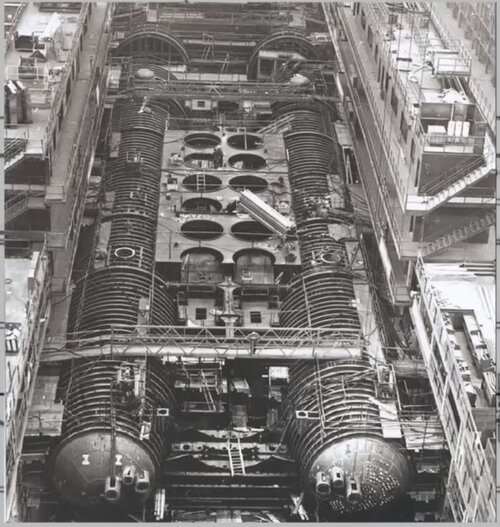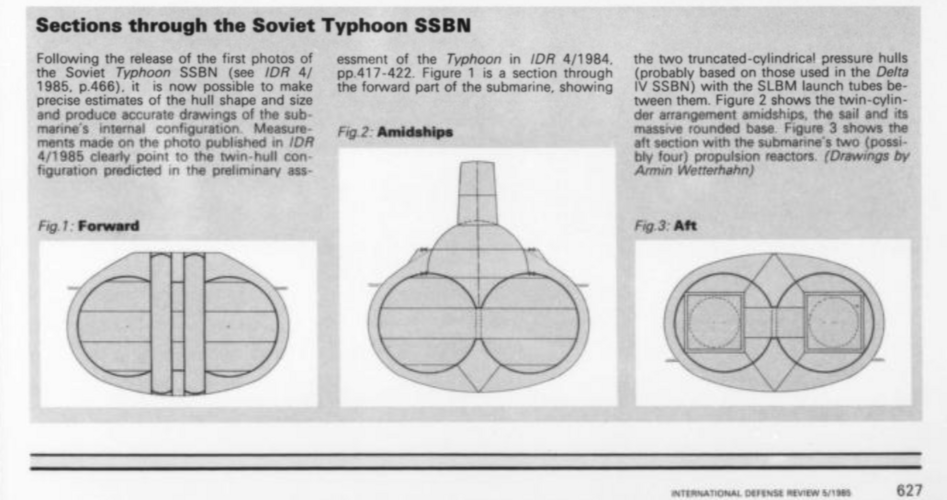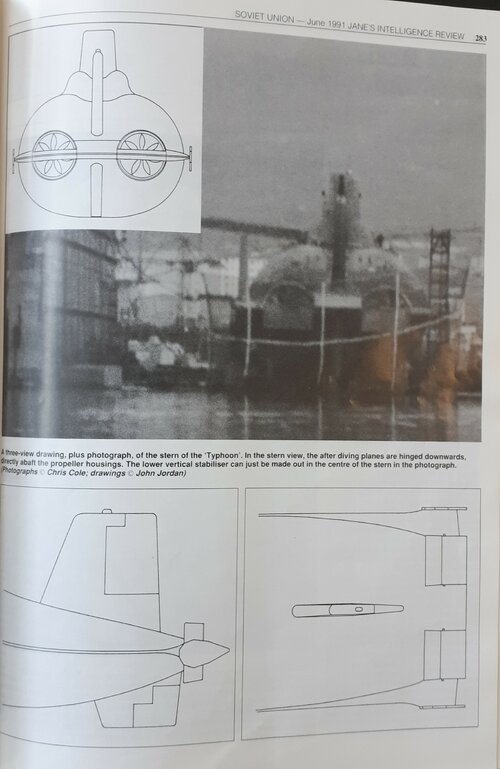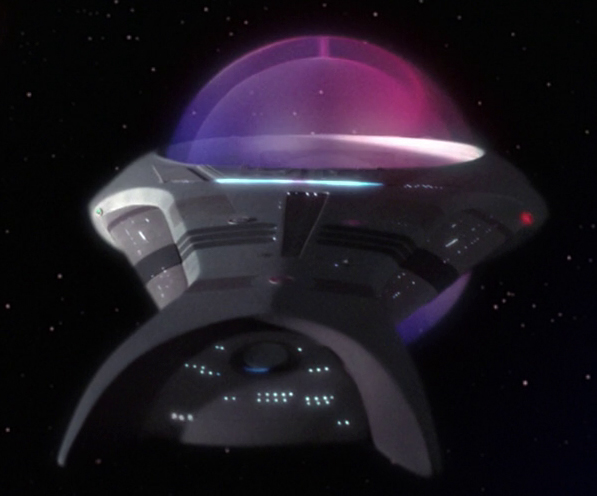I just watched a video on the Typhoon-class subs:
At 5:12, this shows a photo of the sub under construction:

This shows the two main pressure hulls, and the holes for the missile tubes between them. I'd always assumed the missile tubes would be inside the pressure hulls, and I had a mental image of the two pressure hulls filling the entire space in the hull.
Does that mean the silos would fill with water when the sub was submerged, or was each silo a pressure vessel?
At 5:12, this shows a photo of the sub under construction:

This shows the two main pressure hulls, and the holes for the missile tubes between them. I'd always assumed the missile tubes would be inside the pressure hulls, and I had a mental image of the two pressure hulls filling the entire space in the hull.
Does that mean the silos would fill with water when the sub was submerged, or was each silo a pressure vessel?



